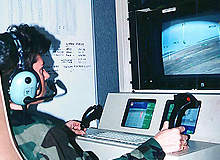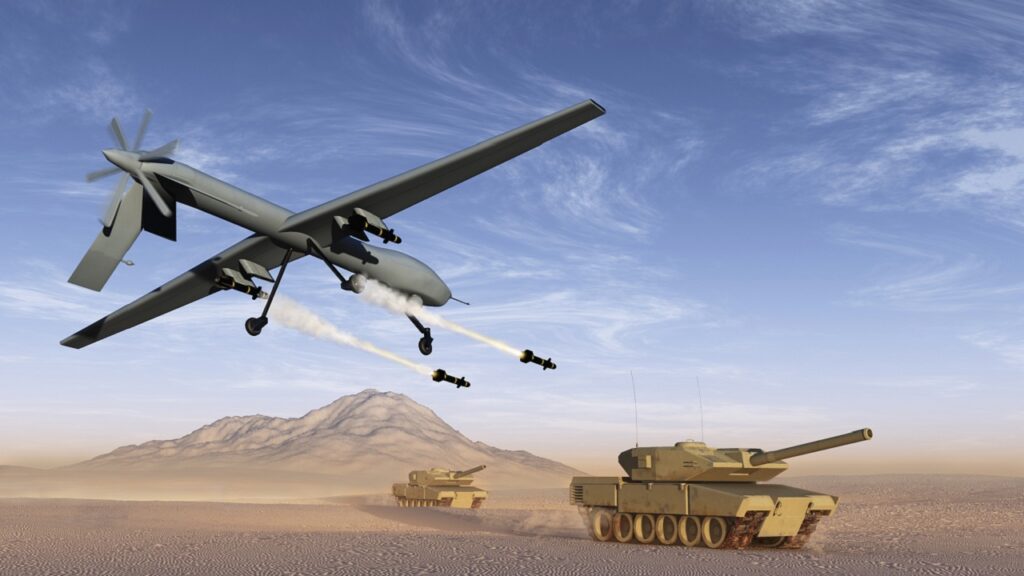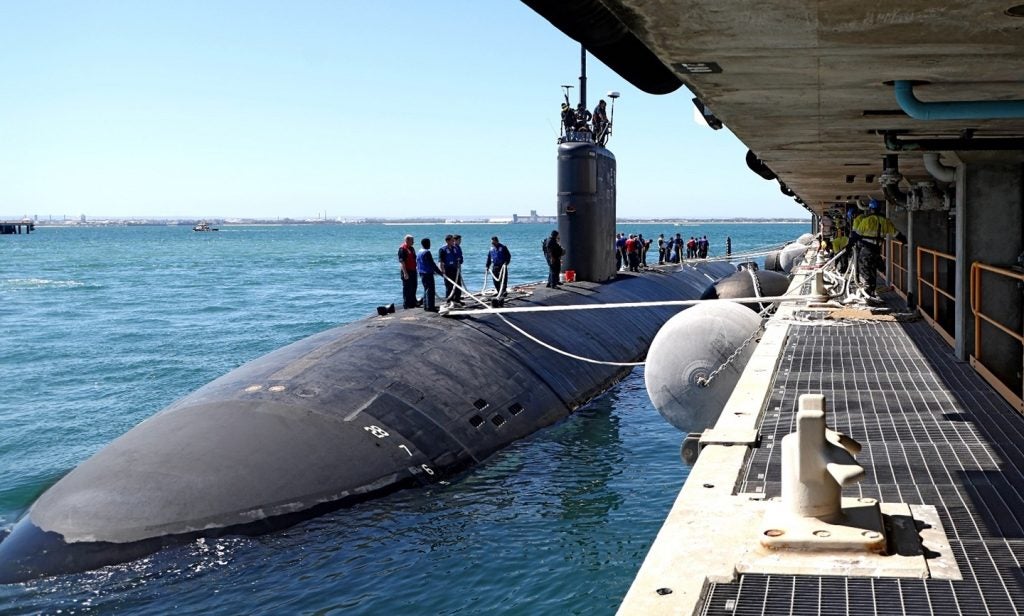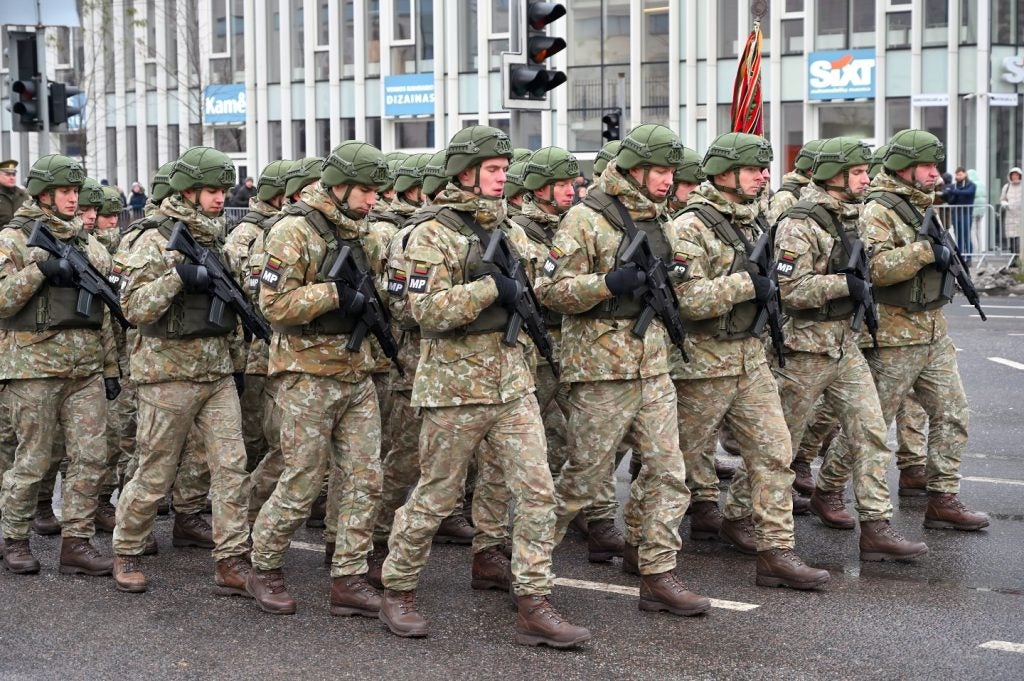
The outstanding value of the UAV in modern combat is that it operates remotely and with increasing accuracy, performing the roles of varied battlefield components without endangering the lives of personnel. The fact that it operates remotely, however, means that there is no local point of control making any decision-making highly dependant on a set of variants viewed from very far away.
The role of the ground control station (GCS), therefore, is of paramount importance not only as the point of control but also as the point from where information is understood, disseminated and acted upon. As far as technology goes, the UAV could be said to contain the “senses” while the GCS, is both the central nervous system and the brain.
A common goal
The US Air Force operates UAVs in combat zones such as Afghanistan remotely from the US via satellite links. A Predator system currently being used in Afghanistan, for example, would typically consist of four aircraft, a GCS and a Trojan Spirit II data distribution terminal. It is equipped with UHF and VHF radio relay links, a C-band line-of-sight data link and UHF and Ku-band satellite data links.
UAVs are generally operated by two consoles: one for the pilot and the other for the payload operator. Many of the operators are former pilots who use a mouse and keyboard to direct the aircraft. The UAV’s mission is preloaded into the aircraft but the “pilot” will often have to change the preset plans due to unforeseen circumstances.
The payload operator also plays a key role in the missions. They are often now trained to analyse incoming intelligence from the UAV, and can as a result alert troops on the ground quickly to any developments.
While UAVs have played a crucial role in Afghanistan, Iraq and other conflicts, they are only as good as the GCS that operates them and the Pentagon is keen to see improvements in this area, particularly in terms of the compatibility of the wide variety of UAVs in use today.
How well do you really know your competitors?
Access the most comprehensive Company Profiles on the market, powered by GlobalData. Save hours of research. Gain competitive edge.

Thank you!
Your download email will arrive shortly
Not ready to buy yet? Download a free sample
We are confident about the unique quality of our Company Profiles. However, we want you to make the most beneficial decision for your business, so we offer a free sample that you can download by submitting the below form
By GlobalDataThus, defence officials are seeking to encourage the development of open-architecture GCSs, which would result in a common main operating system and different applications to control different platforms or sensors. This would allow the USAF, for example, to use one type of drone from one maker to start a mission and another completely different UAV to complete the operation.
This would save money in training and development costs, boost competition (by lowering development costs) and lead to new applications: creating a common GCS software standard could result in an explosion in creativity among designers of unmanned-aircraft software, much as standard internet interfaces enabled the development of the iPhone.
Uncommon ground
Historically, each military service has used a different type of ground station and software to control its aircraft. The USAF, for example, relies on ground control stations supplied by General Atomics Aeronautical Systems to fly its Predators and Reapers, while other services use different suppliers and control software for the UAVs.
Raytheon is seeking to take the lead in this area by developing its common ground control system (CGCS), which it says is the only ground control system where the US Government has full administration purpose rights to the common core UAS C2 software and interfaces.
Raytheon believes that “a common ground control station is clearly the correct direction to maximise operational effectiveness, enable networked capability and control costs”. It adds, “the key to success is to correctly define and implement the approach to a common ground station and then implement effective governance to best capture the benefits.”
Meanwhile, advances continue to take place in the design of GCSs. General Atomics, for example, is currently developing an “advanced cockpit” GCS, equipped with numerous new features designed to improve GCS operator efficiency and increase situational awareness. The system includes 3D maps, intuitive touchscreen technology, ergonomic design and wrap-around synthetic vision.
Controller stress
Although they are distant from the battlefront, the ground crew operating UAVs are prone to the same psychological stresses as their comrades on the battlefield. This is partly because they are exposed to high-resolution battle images, including those of people being killed. By contrast, airmen in aircraft rarely see the aftermath of their attacks.
In a fighter jet, “when you come in at 500mph-600mph, drop a 500lb bomb and then fly away, you don’t see what happens,” says Colonel Albert K Aimar, commander of the 163rd Reconnaissance Wing in the US, who has a bachelor’s degree in psychology. But when a Predator fires a missile, you watch.
This may explain one of the unexpected developments of the deployment of UAVs. While it was initially thought that those operating drones would be more callous about their actions than personnel operating in the battlefield, the opposite now appears to be true. Some analysts argue that UAV operators may almost care too much, and that they are experiencing higher levels of combat stress than some units in Afghanistan, with significantly increased fatigue, emotional exhaustion and burnout.
Psychologists argue that operators are also subject to a unique stress, known as “whiplash transition”, referring to the way in which they can be in command of a deadly mission and then drive home to their family and children. However, some also argue that the trauma suffered by drone operators is overstated and that it can never be comparable to that endured by those in the battlefield, whose lives are at risk.
Future horizons
The hope for the future is that technological developments are likely to render this debate over control irrelevant over the next ten to 20 years as the USAF, the world’s largest operator of UAVs, seeks to increase their automation and that of the GCS – a strategy outlined in its 2009-47 UAS flight plan.
The trend towards multiple payloads on aircraft is one of the drivers of GCS automation. The Gorgon Stare surveillance pod fitted to Reaper UAVs in 2010 allows ten separate video images to be provided simultaneously to joint forces on the ground. This will increase initially to 30 and then to 65 images, a development that will place huge demands on operators or require huge armies of such personnel to monitor the increased flow of information emanating from UAVs.





